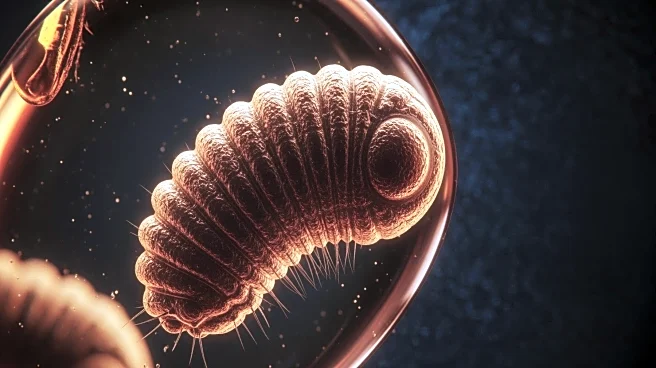What's Happening?
Researchers in Argentina have discovered a new theropod species, Anteavis crurilongus, from the Carnian period, which exhibits features previously thought to belong to later neotheropods. This finding suggests greater early dinosaur diversity and a possible
climate-related ebb and return of dinosaur abundance in northwestern Argentina. The study, published in Nature Ecology & Evolution, integrates fossil discovery with stratigraphic, anatomical, and phylogenetic analyses to evaluate early dinosaur diversification.
Why It's Important?
The discovery of Anteavis crurilongus provides new insights into the early diversification of dinosaurs, challenging existing theories about their evolutionary timeline. By revealing unexpected anatomical features, the study expands the known diversity of early theropods and highlights the impact of climate on dinosaur evolution. This research contributes to a deeper understanding of the factors that influenced the rise of dinosaurs and their adaptation to changing environments.
What's Next?
Further research is needed to explore the implications of this discovery for the broader understanding of dinosaur evolution. Paleontologists may investigate other fossil sites for additional evidence of early dinosaur diversity and climate-driven changes. The study's findings could also prompt a reevaluation of existing models of dinosaur evolution and the role of environmental factors in shaping their development.
Beyond the Headlines
The discovery of Anteavis crurilongus underscores the importance of interdisciplinary research in paleontology, combining fossil analysis with environmental and geological studies. This approach may lead to new discoveries about the interactions between ancient species and their habitats, offering valuable lessons for understanding current biodiversity and climate change.














